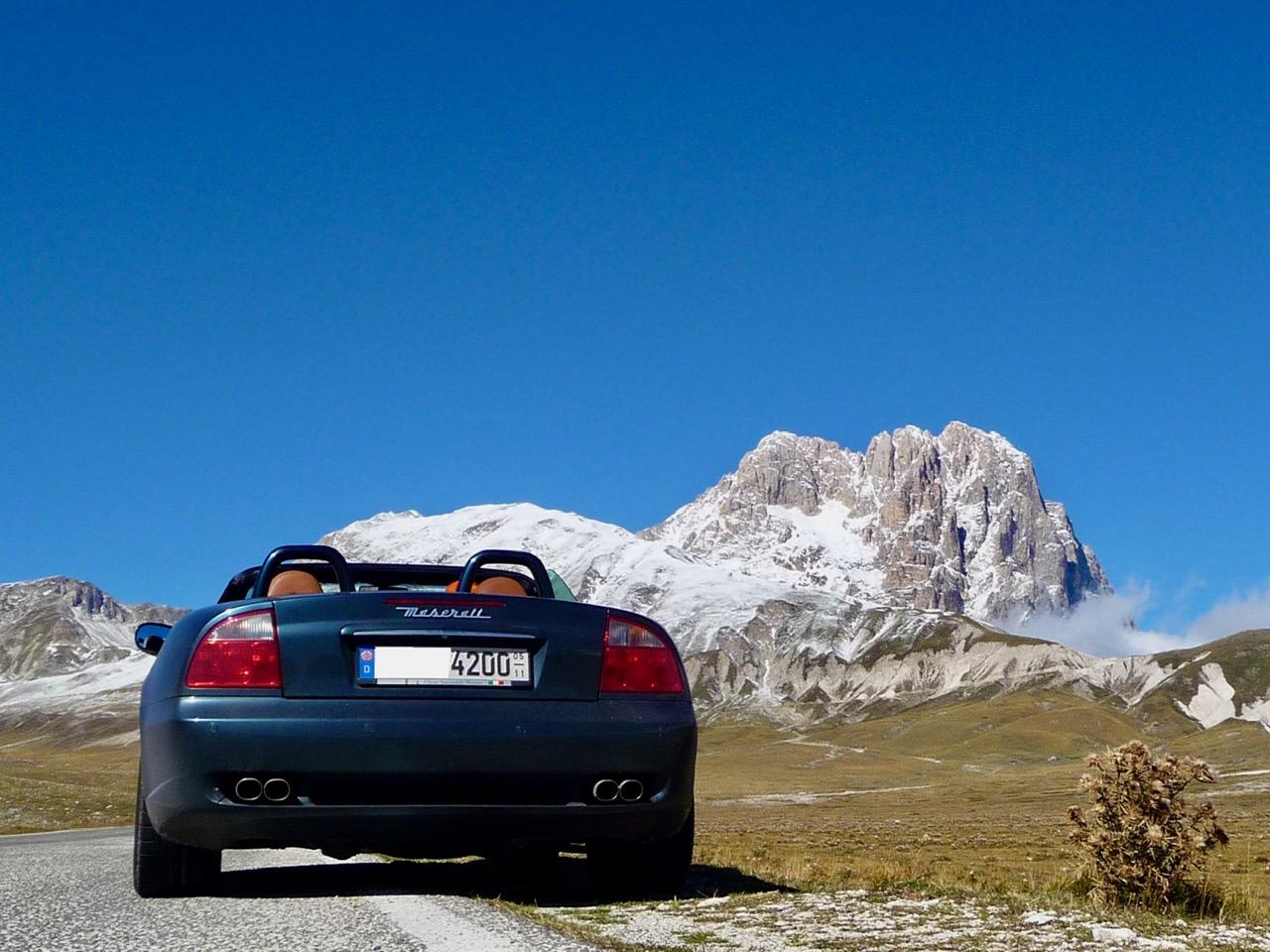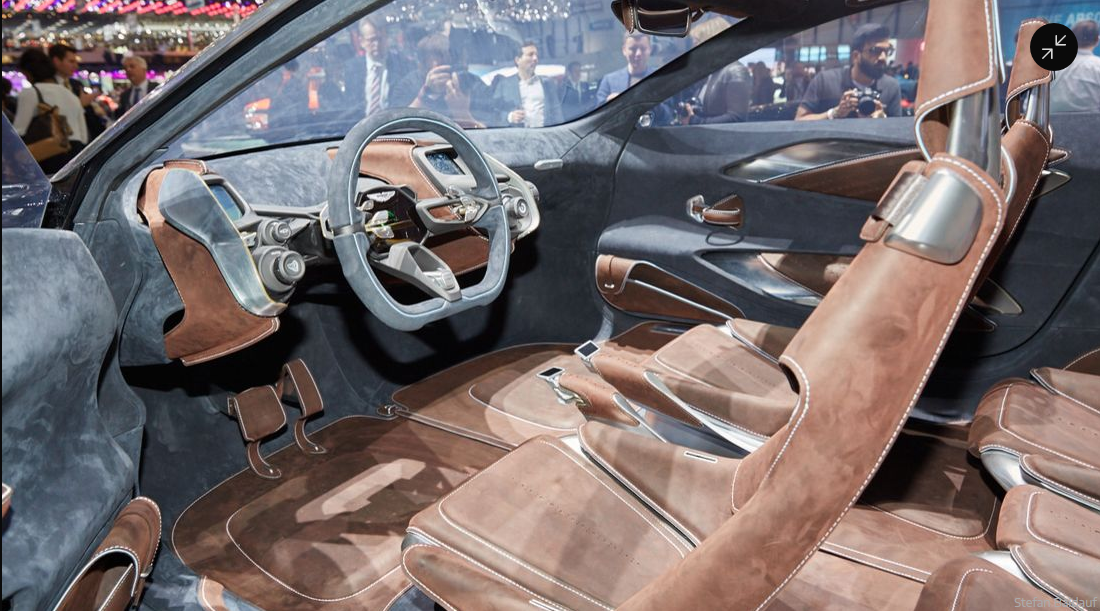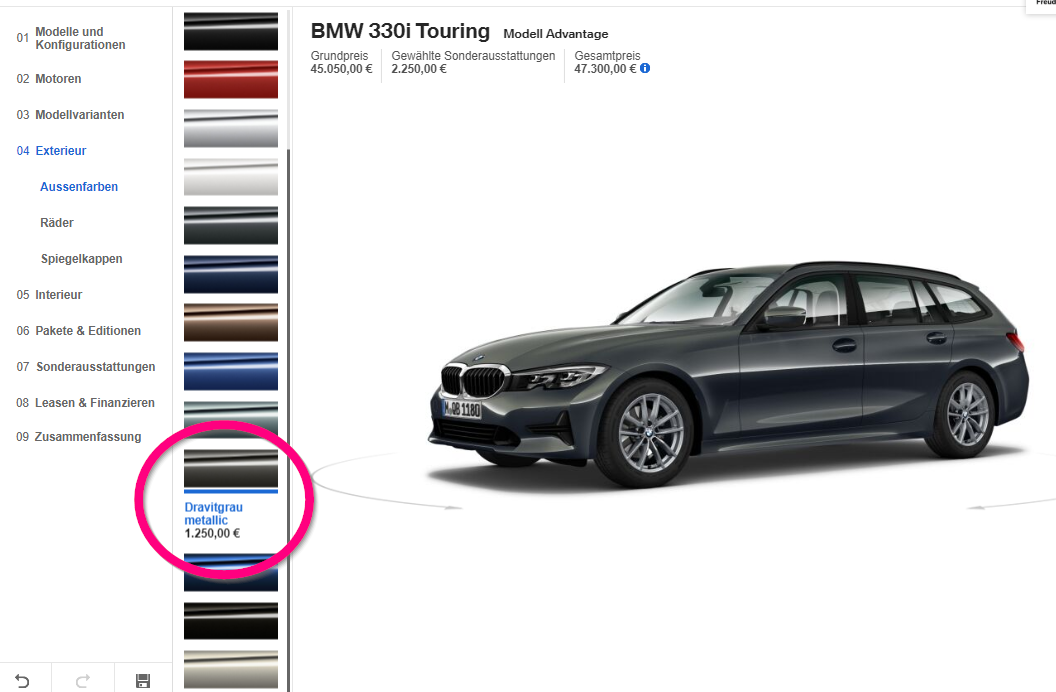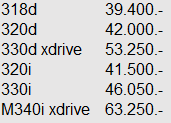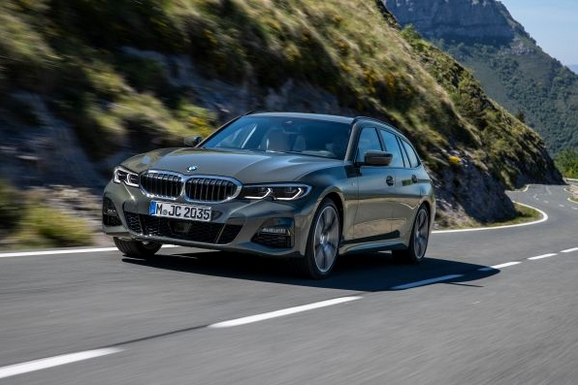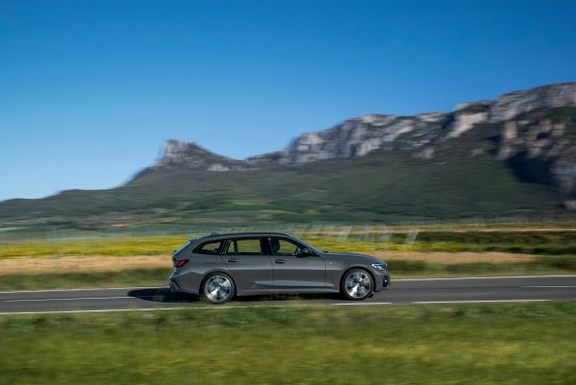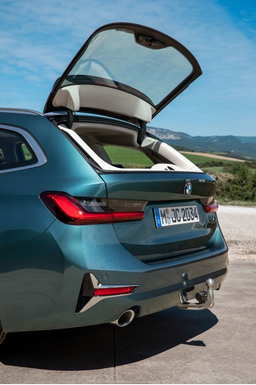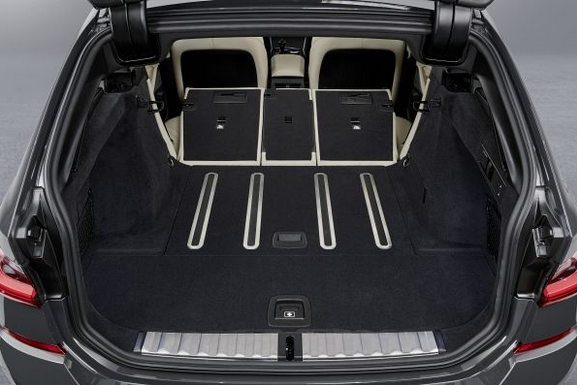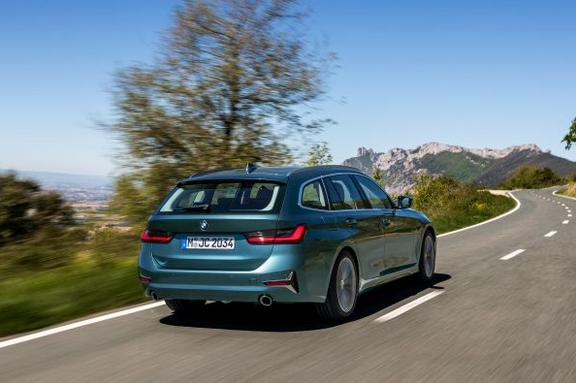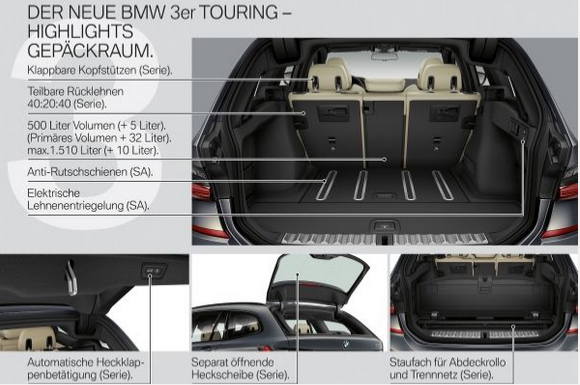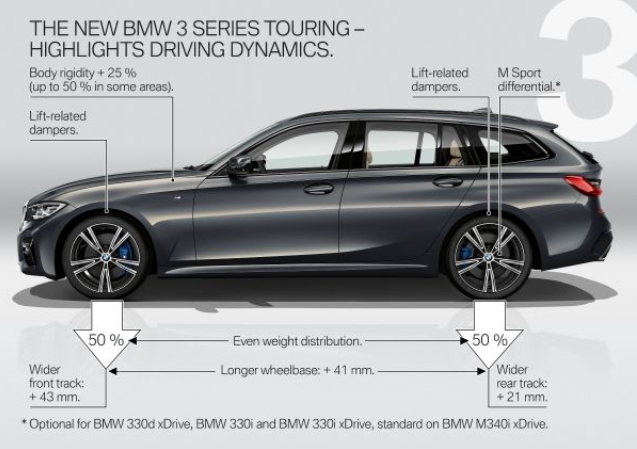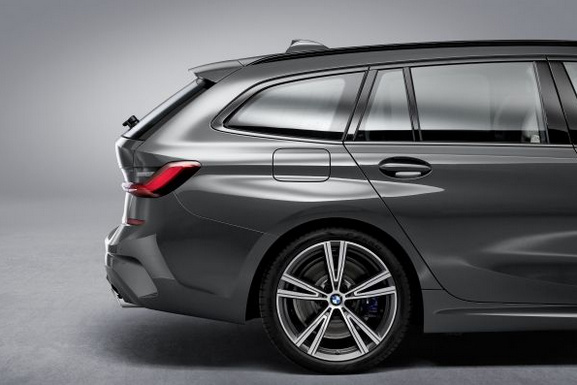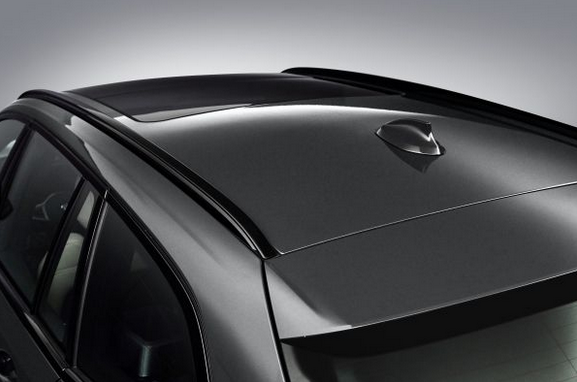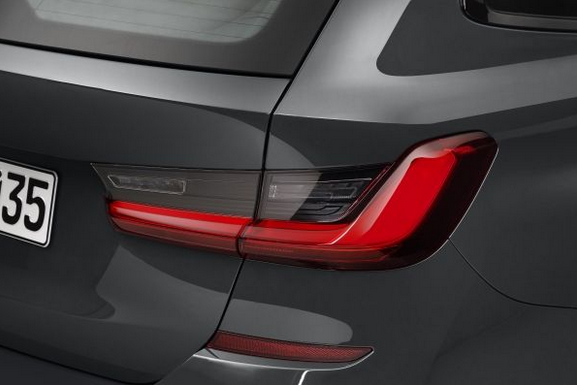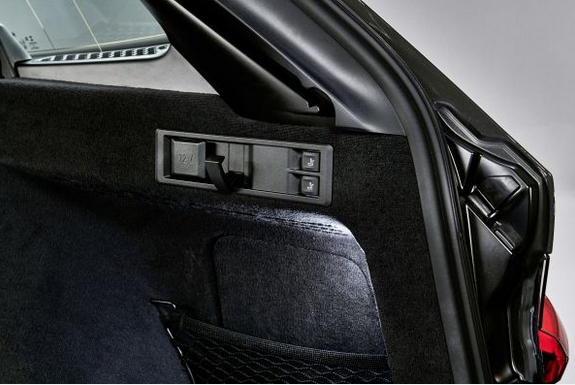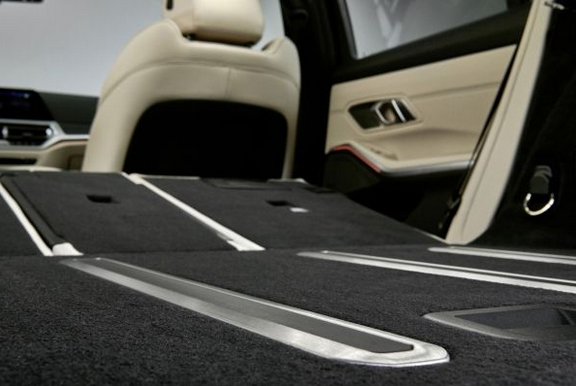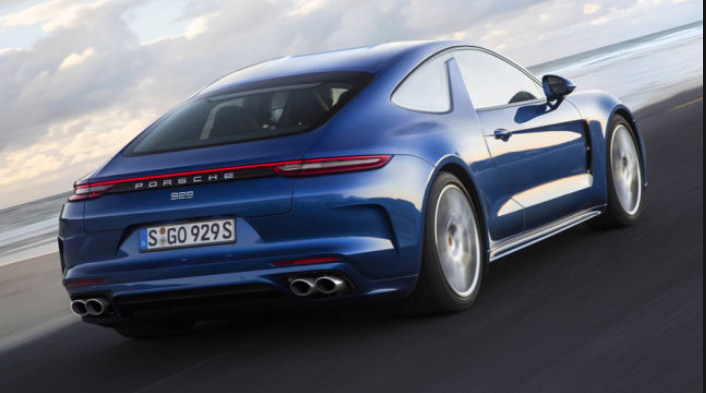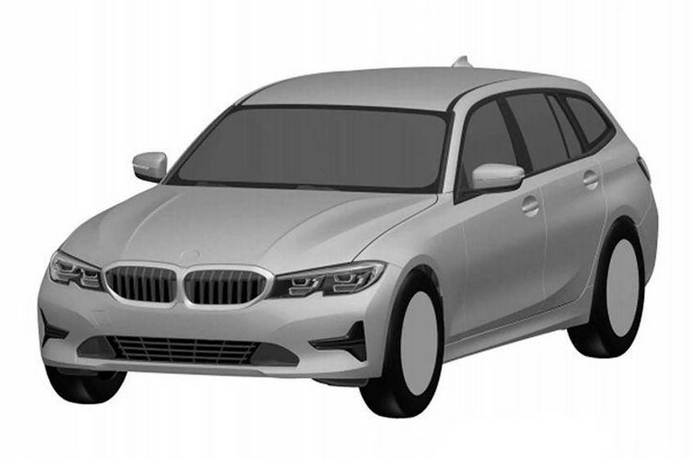-
Numero contenuti pubblicati
12968 -
Iscritto il
-
Ultima visita
-
Giorni Massima Popolarità
56
Tipo di contenuto
Forum
Galleria
Calendario
Download
Articoli del sito
Store
Blog
Tutti i contenuti di 4200blu
-
- 145 risposte
-
-propulsore depotenziato della 330e (che sara piu potente come 530e oggi) -si parla per 2020 di presentazione/SOP e anche commercializzazione (LHD e RHD partono insieme)
- 57 risposte
-
- 2
-

-
- serie 3
- bmw serie 3 touring 2019
- (e 7 altri in più)
-
..oppure un consiglio d'amministrazione meno conservativo e piu coraggioso che da piu possibilita/liberta ai team esistenti del centro stile ?
- 57 risposte
-
- serie 3
- bmw serie 3 touring 2019
- (e 7 altri in più)
-
..d'accordo, che quasi tutti macchine nuove sono troppo grossi/larghi, ma la G30 e 3cm piu largo come una 500X e 3cm meno largo come una Giulia, cosi niente straordinario o esagerato, semplicimente un altra figlia dei tempi attuali con macchine adipose.
- 57 risposte
-
- serie 3
- bmw serie 3 touring 2019
- (e 7 altri in più)
-
Si, 320e e 330e prossimo anno.
- 57 risposte
-
- 1
-

-
- serie 3
- bmw serie 3 touring 2019
- (e 7 altri in più)
-
Forse una strada per il campo di prova Idiada vicino Barcelona dove passano tutti i prototipi che vanno verso il campo?
- 199 risposte
-
- 3
-

-
- ibrido fiat
- 500x spy
-
(e 9 altri in più)
Taggato come:
-
..giusto, perche ha l'aria dei ambientalisti e dei intelletuali verdi..il contrario assuluto di un guidatore BMW tradizionale
- 57 risposte
-
- 3
-

-
- serie 3
- bmw serie 3 touring 2019
- (e 7 altri in più)
-
hmm...resto al opinione, sopratutto dal vivo, la 2porte e molto piu bella ?
- 37 risposte
-
- 1
-

-
- sondaggio
- serie 8 gran coupe
- (e 8 altri in più)
-
Se 75k al anno ad un prezzo piu alto come la berlina sono niente, poi no - altrimenti si.
- 57 risposte
-
- serie 3
- bmw serie 3 touring 2019
- (e 7 altri in più)
-
Perche? Sembra una Macan con muso Aston - niente male secondo me.
- 145 risposte
-
- 2
-

-
G21 per Italia sara ca. 45% "model advantage line", "model luxury line/Sportline/M-Sport line" insieme altri 25%, il resto base e business.
- 57 risposte
-
- 1
-

-
- serie 3
- bmw serie 3 touring 2019
- (e 7 altri in più)
-
lasciamo a parte le serie iniziale del 2019 (dove sono 50% TI), in poi in vista globale saranno ca. 30% della 3er SW in versione TI, per il mercato italiano ma solo 15%.
- 57 risposte
-
- 1
-

-
- serie 3
- bmw serie 3 touring 2019
- (e 7 altri in più)
-
in caso di BMW non e pastello (anche e vero, che grigio pastello, iniziato da Abarth) e diventata molto di moda. E grigio Dravit metallizato
- 57 risposte
-
- serie 3
- bmw serie 3 touring 2019
- (e 7 altri in più)
-
- 57 risposte
-
- serie 3
- bmw serie 3 touring 2019
- (e 7 altri in più)
-
Press Contact. Kai Lichte BMW Group Tel: +49-89-382-51240 send an e-mail Downloads. Attachments(4x, 7.81 MB) Photos(145x, 828.05 MB) This article in other PressClubs PressClub Africa, DOM, East Europe PressClub Ceska PressClub Hungary PressClub Italy PressClub Netherlands Show all The new BMW 3 Series Touring – Product hightlights (06/2019). The new BMW 3 Series Touring – Product hightlights (06/2019). Via BMW Topic Spy -->https://www.autopareri.com/forums/topic/65364-bmw-serie-3-touring-2019-prj-g21-spy
- 57 risposte
-
- 2
-

-
- serie 3
- bmw serie 3 touring 2019
- (e 7 altri in più)
-
- 4264 risposte
-
- quattroporte m183
- maserati newgt
-
(e 35 altri in più)
Taggato come:
- quattroporte m183
- maserati newgt
- m240
- maserati 100% electric
- m6u
- m157
- m9s
- maserati f-uv
- m184
- mmxxi
- maserati bev
- maserati elettrica
- m156
- nuove maserati
- levante mca
- m183
- m189
- maserati supercar
- quattroporte mca
- maserati
- maserati full electric
- maserati ev
- m161
- levante m184
- future maserati
- maserati grecale
- grecale
- maserati d-uv
- folgore
- nuovi modelli
- maserati spy
- maserati mc20
- new v6
- 2.0 phev
- ghibli mca
- 2.0 mhev
- mmxx
-
- 66 risposte
-
- bmw spy
- serie 3 spy
-
(e 4 altri in più)
Taggato come:
-
Sara una novita per berline RR ?
- 31 risposte
-
- 1
-

-
- rolls royce
- ghost
-
(e 4 altri in più)
Taggato come:
-
Diciamo cosi - non sara TA ?
- 31 risposte
-
- 3
-

-

-
- rolls royce
- ghost
-
(e 4 altri in più)
Taggato come:
-
..macchina nuova completa, niente restyling, cambia anche trazione.
- 31 risposte
-
- rolls royce
- ghost
-
(e 4 altri in più)
Taggato come:
-
Nuovo Mercedes-Benz GLB: per la famiglia e gli amici Stoccarda/Salt Lake City. Proporzioni poderose, caratterizzate da sbalzi corti e un design orientato alla guida in fuoristrada, trazione integrale 4MATIC a richiesta e speciali luci Offroad, che alle basse velocità aiutano a riconoscere subito gli ostacoli davanti all'auto. Nuovo Mercedes-Benz GLB è un SUV versatile e una vettura spaziosa per tutta la famiglia, la prima Mercedes-Benz del segmento disponibile a richiesta anche in versione sette posti. I due sedili della terza fila possono accogliere persone di altezza fino a 1,68 metri. Con i potenti ed efficienti motori a quattro cilindri, i sistemi di assistenza alla guida di ultima generazione, che aiutano attivamente il guidatore, l'intuitivo sistema di Infotainment MBUX e la gestione comfort dei programmi ENERGIZING, Nuovo Mercedes-Benz GLB (lunghezza/larghezza/altezza: 4.634/1.834/1.658[1] millimetri) dispone di tutti i punti di forza dell'attuale generazione di compatte Mercedes-Benz. GLB ha un passo di 2.829 millimetri, che supera ad esempio di dieci centimetri Nuova Classe B e che, unito alla funzionalità della parte superiore della vettura, è determinante per la generosa abitabilità dell'auto. Lo spazio per la testa sulla prima fila di sedili misura 1.035 millimetri ed è il migliore del segmento, mentre i 967 millimetri di spazio effettivo per le gambe nel vano posteriore della versione cinque posti sono particolarmente comodi. Il vano bagagli sfodera le qualità di una station-wagon, con un volume compreso tra 560 e 1.755 litri (valori riferiti alla versione cinque posti). A richiesta, la seconda fila di sedili scorre in senso longitudinale, mentre l'inclinazione degli schienali è regolabile già di serie su più posizioni. Si ottengono così fino a 179 litri di capacità in più, che consentono un uso versatile del bagagliaio. Per maggiori informazioni sulla versatilità, vedere a pag. 3. Una storia di successo: l'ottavo modello della gamma compatta Nuovo GLB è prodotto nello stabilimento di Aguascalientes (Messico) e, per il mercato cinese, nella sede produttiva di Pechino. Presso le Concessionarie tedesche, GLB arriverà a fine anno. Ormai una Mercedes-Benz su tre è un SUV, una su quattro una compatta. Un SUV compatto come GLB riunisce quindi tutti gli ingredienti di successo dei due segmenti in cui la Casa registra il maggior numero di vendite. Con Nuovo GLB la gamma compatta di Mercedes-Benz sale a quota otto modelli: Classe A, Classe A Berlina e Classe A Berlina versione lunga, Classe B, CLA Coupé, CLA Shooting Brake e GLA sono già sul mercato. Nel 2018, oltre 609.000 Clienti sono entrati in possesso in tutto il mondo di un modello compatto. Dal lancio della prima Classe A nel 1997, Mercedes-Benz ha consegnato oltre 6,5 milioni di vetture di questo segmento sul mercato internazionale. Ready for Boarding: fino a sette posti GLB è la prima compatta Mercedes-Benz disponibile a richiesta con una terza fila di sedili, costituita da due sedili singoli supplementari su cui trovano comodamente posto passeggeri di altezza non superiore a 1,68 metri. L'ampio equipaggiamento per la sicurezza comprende poggiatesta estraibili, cinture di sicurezza con pretensionatore e limitatore della forza di ritenuta, un windowbag che protegge lateralmente anche i passeggeri seduti in terza fila nonché i fissaggi ISOFIX e Top Tether, che permettono di fissare nel vano posteriore fino a quattro seggiolini compatibili. Per il comfort dei passeggeri, la terza fila posteriore dispone di due portabevande, collocati tra i sedili, e di due scomparti portaoggetti con inserto in gomma, ricavati nei rivestimenti laterali del vano di carico ed equipaggiati entrambi con una porta USB. Per ampliare il vano bagagli è possibile abbassare a scomparsa i sedili a filo del pianale. La versatilità in dettaglio Versatilità Cinque posti Sette posti (a richiesta) Prima fila di sedili Sedile lato passeggero anteriore ribaltabile (a richiesta) Seconda fila di sedili Schienale frazionabile e ribaltabile nel rapporto 40:20:40 Inclinazione dello schienale regolabile su più posizioni Fila di sedili scorrevole di 140 mm in senso longitudinale, piano di seduta frazionabile nel rapporto 40:60 (a richiesta) Fila di sedili scorrevole di 140 mm in senso longitudinale, piano di seduta frazionabile nel rapporto 40:60 Funzione EASY-ENTRY Terza fila di sedili - Due sedili singoli a scomparsa Orientato alla guida in fuoristrada: il design degli esterni Le poderose proporzioni di GLB enfatizzano un design orientato alla guida in fuoristrada, in cui dominano le generose superfici, abbinate a linee ridotte e giunzioni precise. Il frontale verticale con i fari incisivi dimostra la natura offroad, così come gli sbalzi corti davanti e dietro. Le spalle muscolose e ben modellate dominano la vista laterale e sono accentuate dalla linea di cintura ascendente all'altezza del montante posteriore. Le porte che arrivano a coprire i sottoporta rendono più confortevole salire a bordo, proteggono il vano porta dalla sporcizia e aumentano la protezione in caso di impatto laterale. I cladding protettivi continui definiscono le proporzioni e sottolineano il carattere offroad al pari della protezione paracolpi anteriore e posteriore. «Mercedes-Benz GLB ha un design iconico che gli conferisce il carattere inconfondibile di un SUV», dichiara Gorden Wagener, Chief Design Officer di Daimler AG. «La forma pulita, che abbina linee ridotte e superfici poderose, esprime la nostra filosofia di design della “limpida sensualità”.» Dettagli effetto alluminio: il design degli interni La plancia portastrumenti è un corpo unico da cui pare sia stata “tagliata via” una parte nella zona del guidatore e del passeggero anteriore. Davanti al conducente si trova la plancia con display widescreen, che per i comandi e la visualizzazione si affida al sistema MBUX (Mercedes-Benz User Experience). È nuovo l'elemento tubolare in look alluminio, che delimita inferiormente la plancia portastrumenti e accoglie le tre bocchette centrali. Il suo stile offroad conferisce alla plancia un'immagine di forza e robustezza ma anche di simpatia. Sotto le bocchette si trova il gruppo di comandi del climatizzatore, i cui tasti sembrano ricavati per fresatura da un cilindro di alluminio. Il carattere robusto degli interni prosegue anche nella consolle centrale: grazie all'effetto “fresato”, gli elementi tubolari infondono ai componenti e agli elementi di comando un aspetto massiccio. Sulle porte il carattere SUV è sottolineato dalla maniglia di sostegno orizzontale, che a partire dalla versione Progressive si inserisce nell'architettura complessiva del rivestimento della porta riproponendo il motivo del solido tubo di alluminio fresato. Spot su rami e pietre: le luci Offroad A richiesta, per GLB sono disponibili sia i fari a LED High Performance sia i MULTIBEAM LED. Questi ultimi consentono di adeguare elettronicamente le luci di marcia alle condizioni del traffico con estrema rapidità e precisione. Tra gli equipaggiamenti a richiesta figurano inoltre i fendinebbia con tecnologia LED, che distribuiscono la luce su una fascia più ampia rispetto ai fari principali, illuminando meglio i bordi della strada. La loro posizione ribassata nel paraurti anteriore concorre a ridurre il pericolo di abbagliamento. I modelli 4MATIC dispongono del pacchetto tecnico Offroad che, in abbinamento ai fari MULTIBEAM LED, prevede una speciale funzione di illuminazione Offroad per riconoscere meglio gli ostacoli nella guida notturna in fuoristrada. Le luci Offroad consistono nell'accensione continua delle luci di assistenza alla svolta dei fari MULTIBEAM LED fino a una velocità di 50 km/h. Si ottiene così una ripartizione più ampia e luminosa della luce nella zona direttamente antistante la vettura. Dalla A di assistenza alla W di wearable: i dettagli tecnici Sul piano tecnologico, GLB approfitta di tutti i punti di forza dell'attuale generazione di compatte Mercedes-Benz. Di seguito sono descritti i principali. · Motori a benzina e diesel a quattro cilindri, completamente rinnovati per la nuova edizione delle serie compatte: rispetto alla generazione precedente si distinguono per la potenza specifica nettamente incrementata, la migliore efficienza e la riduzione delle emissioni (per i dettagli vedere a pag. 7). · Sistemi di assistenza alla guida che coadiuvano attivamente il conducente con funzionalità mutuate da Classe S: grazie ai sistemi di telecamere e radar migliorati, GLB è in grado di vedere fino a 500 metri davanti a sé e, in determinate situazioni, di viaggiare in modo parzialmente automatizzato, ad esempio modificando la velocità prima di curve, incroci o rotatorie con l'ausilio del sistema di assistenza attivo alla regolazione della distanza DISTRONIC e attingendo anche ai dati cartografici e di navigazione. A tutto ciò va ad aggiungersi l'intuitivo sistema di assistenza attiva al cambio di corsia, che è una funzione nuova del sistema di assistenza allo sterzo attivo. Se poi a bordo è presente il sistema di assistenza al parcheggio attivo con PARKTRONIC, GLB dispone anche della funzione ampliata di ripartenza automatica in autostrada. · Assetto comfort: sull'asse anteriore GLB dispone di montanti telescopici McPherson, mentre al posteriore monta un asse multilink a molle elicoidali con disaccoppiamento acustico e vibrazionale. A richiesta sono disponibili le sospensioni attive, che permettono al conducente di passare, con l'interruttore DYNAMIC SELECT, da una taratura più confortevole a un settaggio particolarmente sportivo. · Intuitivo sistema di Infotainment MBUX (Mercedes-Benz User Experience): i principali vantaggi di questo sistema sono il potente calcolatore, la brillantezza degli schermi e della grafica, la visualizzazione personalizzabile, il display head-up a colori, la navigazione con Realtà Aumentata, il software con funzione di autoapprendimento e le azioni vocali attivabili con la parola chiave “Hey Mercedes”. · Gestione comfort dei programmi ENERGIZING: collega in rete diversi sistemi per il comfort all'interno della vettura e sfrutta la regolazione della luminosità e della musica, insieme a diversi tipi di massaggio, per creare i più disparati programmi finalizzati al benessere. L'ENERGIZING COACH suggerisce i programmi in base alla situazione. Se è collegato il Mercedes-Benz vivoactive® 3 Smartwatch o un altro dispositivo “wearable” Garmin® compatibile, i suggerimenti sono ancora più precisi perché tengono conto di fattori personali come il livello di stress o la qualità del sonno. Quando serve una spinta in più: la trazione integrale 4MATIC GLB è equipaggiato a richiesta con la trazione integrale permanente 4MATIC, con ripartizione variabile della coppia. La trazione integrale dalla taratura sportiva offre al guidatore la possibilità di influire sulla trazione 4MATIC con l'interruttore DYNAMIC SELECT. Sono disponibili tre mappature per il comando della trazione, ma in ogni modalità il sistema reagisce in modo flessibile in base alla situazione di guida specifica. Nella marcia regolare il programma «Eco/Comfort» prevede una ripartizione di 80:20 (asse anteriore:asse posteriore), il programma «Sport» una di 70:30. Nella modalità Offroad la frizione della trazione integrale viene impiegata come bloccaggio longitudinale e la ripartizione di base è di 50:50. Fanno parte dei componenti del 4MATIC la presa di potenza per la trasmissione alle ruote posteriori, integrata nel cambio a doppia frizione automatizzato, e gli ingranaggi e il differenziale al ponte posteriore con frizione a dischi multipli integrata, ad azionamento elettromeccanico. Un motore elettrico esercita una forza assiale attraverso una ruota dentata a innesti frontali e una rampa a sfere per aprire o chiudere le lamelle del pacco dischi. Il differenziale posteriore compensa la differenza di numero di giri delle ruote posteriori. I vantaggi sono soprattutto l'attuazione indipendente dal numero di giri per tutto l'intervallo di regolazione, il pilotaggio della frizione anche a vettura ferma e il maggiore rendimento grazie al concetto della rampa a sfere. Utile nel fuoristrada leggero: il pacchetto tecnico Offroad Oltre alle luci Offroad (vedere a pag. 4) il pacchetto tecnico Offroad comprende un programma di marcia aggiuntivo, che adegua l'erogazione di potenza del motore e la regolazione ABS alle condizioni di guida nel fuoristrada leggero. Il programma si attiva con l'interruttore DYNAMIC SELECT. Altri elementi del pacchetto tecnico Offroad. · Nel display multimediale è possibile richiamare un'animazione della situazione di marcia. La rappresentazione realistica del grado di pendenza, dell'angolo d'inclinazione e delle impostazioni tecniche aiuta a valutare correttamente come manovrare l'auto. · L'ausilio alla marcia in discesa, alias Downhill Speed Regulation (DSR), mantiene automaticamente una velocità bassa precedentemente selezionata tra i 2 e i 18 km/h circa, che può essere letta nel display sulla plancia e nel display head-up (a richiesta). Con opportuni interventi frenanti il sistema di assistenza aiuta a mantenere il controllo della vettura nelle discese ripide. Potenza ed efficienza: i motori Nuovo GLB attinge alla squadra di motori a quattro cilindri, benzina e diesel, completamente rinnovata per la nuova edizione delle serie compatte. Rispetto alla generazione precedente, i propulsori si distinguono per la potenza specifica nettamente incrementata, la migliore efficienza e la riduzione delle emissioni. Tra i motori a benzina, il modello base è l'M 282 da 1,33 litri di cilindrata di GLB 200 (consumo di carburante combinato 6,2-6,0 l/100 km, emissioni di CO2 combinate 142-137 g/km)[2]. Per garantire un funzionamento efficiente a carico parziale, questo motore dispone dell'esclusione dei cilindri. Il due litri M 260 di GLB 250 4MATIC (consumo di carburante combinato 7,4-7,2 l/100 km, emissioni di CO2 combinate 169-165 g/km)1 ha un basamento in alluminio pressofuso con canne dei cilindri in ghisa grigia, che si allargano nella parte inferiore secondo il principio CONICSHAPE®. Questo metodo di lavorazione, cui la Casa ha dato anche l'eloquente denominazione interna di “levigatura a campana”, minimizza l'attrito dei pistoni e riduce il consumo. Nella testata cilindri a quattro valvole in alluminio il comando variabile delle valvole CAMTRONIC permette di ottenere una regolazione della corsa delle valvole di aspirazione su due livelli. Il due litri diesel (OM 654q) di GLB 200 d/GLB 220 d con cambio a doppia frizione 8G-DCT (consumo di carburante combinato 5,0-4,9 l/100 km, emissioni di CO2 combinate 133-129 g/km)1 dispone di un sistema di post-trattamento dei gas di scarico ancora più evoluto, grazie al quale soddisfa già adesso i requisiti RDE fase 2 (Real Driving Emissions), obbligatori dal prossimo 2020, e può vantare la certificazione a norma Euro 6d. I modelli in sintesi: GLB 200 GLB 250 4MATIC Cambio 7G-DCT (automatico) 8G-DCT (automatico) Cilindrata (cm³) 1.332 1.991 Potenza (kW/CV) 120/163 165/224 a (giri/min) 5.500 5.800 Coppia max. (Nm) 250 350 a (giri/min) 1.620 - 4.000 1.800 - 4.000 Consumo di carburante combinato (l/100 km)[3] 6,2-6,0 7,4-7,2 Emissioni di CO2 combinate (g/km)1 142-137 169-165 Accelerazione 0-100 km/h (s) 9,1 6,9 Velocità massima ammessa (km/h) 207 236 GLB 200 d GLB 200 d 4MATIC GLB 220 d 4MATIC Cambio 8G-DCT (automatico) 8G-DCT (automatico) 8G-DCT (automatico) Cilindrata (cm³) 1.951 1.951 1.951 Potenza (kW/CV) 110/150 110/150 140/190 a (giri/min) 3.400 – 4.440 3.400 – 4.440 3.800 Coppia max. (Nm) 320 320 400 a (giri/min) 1.400 - 2.600 1.400 - 2.600 1.600 - 2.400 Consumo di carburante combinato (l/100 km)1 5,0-4,9 5,5-5,2 5,5-5,2 Emissioni di CO2 combinate (g/km)1 133-129 144-136 146-138 Accelerazione 0-100 km/h (s) 9,0 9,3 7,6 Velocità mass. ammessa (km/h) 204 201 217
- 83 risposte
-
- mercedes ufficiale
- glb 2020
-
(e 5 altri in più)
Taggato come:
-
ha un accordo con BMW per una nuova piattaforma elettrica, e sono in discusione per la prossima piattaforma TA.
- 1174 risposte
-
- fca-renault
- fiat
-
(e 2 altri in più)
Taggato come:
-
New Mercedes-AMG four-cylinder turbo engine from ultra-modern production: The world's most powerful four-cylinder engine in series production, made in Affalterbach Affalterbach. Four wins: with an output of up to 310 kW (421 hp), the completely newly developed Mercedes-AMG 2.0-litre M 139 engine is the world's most powerful turbocharged four-cylinder engine in series production. With this engine, Mercedes-AMG has even exceeded the previously most powerful M 133 by 30 kW (41 hp). Maximum torque has also increased from 475 to up to 500 newton metres. With an output per litre of up to 155 kW (211 hp), the new Mercedes-AMG high-performance turbo engine even ranks ahead of many well-known super-sports car engines. The new, highly efficient powerpack is produced on an innovative production line in Affalterbach, on the "One Man, One Engine" principle. The four-cylinder available in two output versions will ensure agile performance for the compact models of Mercedes-AMG: with 310 kW (421 hp) as the S-model and with 285 kW (387 hp) in the basic version. This product policy logic has already proved successful in the V8-powered AMG Performance models, and more closely meets customer wishes. Apart from its performance figures, the new engine impresses with its immediate response. To this end the torque curve was carefully balanced ("torque shaping"): The peak torque of 500 newton metres (480 newton metres for the basic version) is available in a range of 5000-5250 rpm (4750-5000 rpm in the basic version). With this configuration, the AMG engineers have achieved a power delivery similar to that of a naturally aspirated engine for an even more emotive driving experience. The engine developers were also able to realise a dynamically increasing torque curve in the lower engine speed range, thereby improving agility. The increasing torque at higher rpm makes the engine more free-revving. Moreover, the high maximum engine speed (up to 7200 rpm) confirms the M 139 as a sports engine. "We already set the benchmark in the segment with the preceding engine. This fundamentally new four-cylinder presented us with the challenge of doing even better. And we succeeded with a number of sometimes revolutionary solutions. With the M 139, we have once again impressively demonstrated the engine expertise of Mercedes-AMG. Not only is the output per litre unrivalled for a turbocharged engine, the high level of efficiency also demonstrates that the internal combustion engine still has further potential," says Tobias Moers, Chairman of Mercedes-AMG GmbH. Why "One Man, One Engine" was reinvented The new engine is entirely assembled by hand. On the first floor of the AMG engine manufactory in Affalterbach, a completely newly designed production line was installed in which Mercedes-AMG has brought the "One Man, One Engine" principle to a new level together with Industry 4.0 methods that incorporate the latest findings in ergonomics, materials handling, quality assurance, sustainability and efficiency. On the road to implementing Industry 4.0, AMG's hand assembly operation likewise follows the vision of "smart production". This excels with maximum flexibility, and is transparent and highly efficient. It safeguards and improves the quality of the engines and production processes using innovative and digital technologies. "We have completely revised the principle of "One Man, One Engine" for assembly of the M 139. The result is an ultra-modern production process that places the focus on people. To achieve this, we created the ideal working conditions in a bright, precisely organised and clean environment for our employees. This provides the best basis for continuing to ensure our high quality level even as the technology becomes more complex," says Emmerich Schiller, COO and member of the Board of Management at Mercedes-AMG GmbH. Why a 180-degree rotation brings many advantages The new engine excels with numerous intelligent design features. Compared to the likewise transversely installed M 260 four-cylinder in the "35" models or the preceding M 133 engine, the new Mercedes-AMG M 139 is rotated around its vertical axis by 180 degrees. This means that the turbocharger and the exhaust manifold are now positioned at the rear, on the side of the firewall when viewed from behind. The intake system is therefore positioned at the front. This configuration allows the flattest possible and aerodynamically advantageous front section design. Furthermore, the new arrangement allows much improved air ducting with shorter distances and fewer diversions - both on the intake and exhaust side. How roller bearings improve the responsiveness of the turbocharger The new twinscroll turbocharger combines optimum responsiveness at low engine speeds with a high power in the upper rpm range. In addition to this, the turbine housing is divided into two flow passages which run parallel to one another. Together with the likewise divided ducts in the exhaust manifold, this makes it possible to feed the exhaust flow to the turbine separately. The aim is to prevent the individual cylinders from influencing each other negatively during load cycles, and to improve the gas cycle. The result is higher torque at lower engine speeds, and extremely good responsiveness. Furthermore, the shafts of the compressor and turbine have roller bearings for the first time ‑ as in the top output variant of the AMG 4.0-litre V8 engine in the AMG GT 4-door Coupé. The roller bearings reduce mechanical friction within the turbocharger to a minimum. The charger therefore responds more readily and reaches its maximum speed of up to 169,000 rpm more rapidly. How electronic charge pressure control optimises responsiveness With a maximum charge pressure of 2.1 bar (1.9 bar in the basic version), the 2.0-litre turbo engine is also the top performer in this respect. The electronically controlled wastegate (exhaust relief valve) allows the charge pressure to be controlled even more precisely and flexibly while optimising responsiveness, especially when accelerating from partial load. Numerous parameters are taken into account in this process. The main input signals for the wastegate control unit are the charge pressure, throttle flap position and the knocking tendency. The modifying signals include the intake air temperature, engine temperature, engine speed and atmospheric pressure. This also makes temporary boosting of the charge pressure (overboost) possible under acceleration. Fresh air is used in addition to oil and water to cool the turbocharger. This is directed specifically to the charger from the radiator grille, via the engine cover designed as an air deflector and ducts beneath the bonnet. The concept is based on the principles and experience gained with the cooling for the internally mounted turbochargers of the current AMG 4.0-litre V8 engines, starting with the AMG GT in 2014. In addition the turbine housing has integral insulation. The advantages of the crankcase The all-aluminium crankcase is a chill-cast unit which excels with outstanding material properties. In this process the molten aluminium is poured into the metallic mould using the effect of gravity. Thanks to its good thermal conductivity, the water-cooled mould allows rapid cooling and solidification of the melt. The result is a fine-grained, dense structure that guarantees very high strength. Complex interior geometries can be realised with the help of enclosed sand cores. The so-called closed-deck construction – a design from motor racing ‑ ensures outstanding rigidity with low weight, and allows peak combustion pressures of up to 160 bar. The areas around the cylinders are mostly solid, and the cover plate is only penetrated by smaller ducts for the coolant and engine oil. The crank assembly with a lightweight, forged steel crankshaft and forged aluminium pistons with optimised piston rings combines low friction with high strength. The maximum engine speed is 7200 rpm, and peak output is developed at 6750 rpm. The sump features baffle plates so that despite the larger sump, and even under high lateral acceleration forces, there is always sufficient engine oil to lubricate all the relevant components. Why the cylinder liners are coated with NANOSLIDE To reduce friction between the pistons and cylinders, the linings are coated using patented NANOSLIDE technology. This gives the linings a mirror-like surface for minimal friction, is twice as hard as conventional grey cast-iron liners and therefore makes them much more durable. NANOSLIDE was developed by Daimler AG, and is protected by more than 90 patent families and more than 40 patents. The coating was first used for AMG's M 156 engine, has benefitted further AMG engines for many years and can also be found in the Formula 1 engine of Mercedes AMG Petronas Motorsport. How larger exhaust valves ensure faster gas cycles Repositioning and slightly angling the injection nozzles and spark plug system in the cylinder head made it possible to greatly enlarge the exhaust valves compared to those of the preceding M 133 engine. The larger exhaust cross-sections allow the gases to stream out of the combustion chambers with low losses, and reduce the overall piston venting action. More efficient cylinder head cooling was achieved by seating rings with a reduced installed height and a cooling borehole near the combustion chamber, in the web area between the exhaust seating rings. The cooling performance was also improved by a near-surface water jacket geometry, a faster flow rate and an optimised volumetric flow rate. A multi-layered, state-of-the-art corrugated metal seal isolates the cylinder head from the crankcase. Two overhead camshafts control the 16 valves via weight-optimised roller cam followers. Camshaft adjustment on the inlet and outlet side allows an excellent response and optimises the gas cycle for each operating point. Variable CAMTRONIC valve control on the exhaust side is another feature, with two cams per valve. The cams have different geometries, so that depending on the cam setting to suit the driving situation, the exhaust valves can be opened for short or long periods – for even better responsiveness at low engine speeds, comfortable and fuel-efficient driving at medium rpm and full power delivery in the upper rpm range. How the fuel injection combines the best of both worlds Turbocharging and direct injection with a spray guided combustion process not only allow a high power yield, but also improve thermodynamic efficiency and therefore reduce both fuel consumption and exhaust emissions. For the first time, the new high-performance four-cylinder has two-stage fuel injection. In the first stage the particularly fast and precisely operating piezo injectors supply fuel to the combustion chambers at a pressure of up to 200 bar. This is a multiple process at times, and is controlled by the engine management system as required. In the second stage there is additional intake manifold injection using solenoid valves. This is needed to achieve the engine''s high specific output. The electronically controlled fuel supply has an operating pressure of 6.7 bar. How the sophisticated cooling system increases power The high output requires an intelligently conceived cooling system. An additional radiator in the wheel arch supplements the large unit in the front level of the main module. A low-temperature circuit is also used for air/water intercooling. Together with the intercooler connected in series, the coolant flow through the radiators is assisted by a high-performance electric pump. This provides for ideal cooling of the highly compressed charge air, thereby contributing towards optimum engine performance. Cooling of the transmission oil is integrated into the engine's coolant circuit, and is assisted by a heat exchanger mounted directly on the transmission. The engine control unit is mounted on the air filter housing, where it is cooled by an airflow. Why the electric water pump brings numerous advantages The demand-controlled, electric high-performance water pump operates independently of the engine speed. Late activation during warm-up means that the engine block warms up more rapidly, with a positive effect on friction, consumption and emissions. The pump can also be switched on or off as required when driving under less power or at low engine speeds. Furthermore, the electric water pump ensures the full engine output and optimum heat dissipation over the entire engine speed range. It also protects against thermal damage when idling in very high ambient temperatures. Functions such as alternator management, the ECO start/stop function with fast restarting, the gliding function and a petrol particulate filter are also part of the technology package for the new AMG four-cylinder. How the new process makes work easier and improves efficiency The new AMG 2.0-litre turbocharged four-cylinder engine with the in-house designation M 139 is assembled entirely by hand following the traditional AMG principle of "One Man, One Engine" – but with a completely new, digitally supported process and logistical organisation. People are the main consideration in all activities. The employees are optimally assisted in their work by digital tools. The focus is on the use of intelligent, flexible technology. The key element in this modern production process is a combination of highly flexible line assembly and preconfigured shopping carts using driverless transport systems. The aspect of sustainability was also a fundamental part of the planning for the new M 139 production line. Production uses renewable energy sources, and considerably reduces CO2 emissions, water consumption and waste. How the new assembly cart makes work easier The assembly cart on which the M 139 is put together was developed with the employees working as a team. It has its own, independent power supply and therefore needs no power cables. All the necessary operating fluids and tools are ergonomically arranged on and around the cart, making work easier, minimising distances and improving efficiency. The integrated tablet PC assists the employee with precise, clearly formulated working instructions. Manuals and guidelines are a thing of the past – manufacturing is now paperless. Why the employees call it "blue sky" The new cordless screwdrivers are immediately to hand, and no longer need to be grabbed from overhead at each station as suspended, wired tools as before. This is why the employees refer to their workplace as "blue sky", as there are no longer any power cables hanging from the ceiling. The assembly shop makes a bright and airy impression, and creates a pleasant working climate. Comprehensive digitisation improves both the efficiency and flexibility of the manufacturing process: Each tool is connected to the WLAN of the engine assembly shop – enabling and torque settings for the relevant assembly stage can therefore be automated by indoor tracking. Furthermore, all completed tasks are digitally recorded, guaranteeing optimum quality assurance, reproduceability and transparency. The advantages of the driverless transport systems Each assembly technician is followed by a driverless transport system. Its shopping cart has precisely the components needed to complete the engine being assembled. The transport systems are loaded up at the Mercedes-AMG logistical centre in Marbach, and delivered to the production line on a "just in sequence" basis. Autonomous control is also carried out by indoor tracking via WLAN. All components can be digitally tracked. The assembly and transport carts are designed in a black-and-white Mercedes-AMG look, and carry slogans such as "START YOUR ENGINE" or "AMG PERFORMANCE INSIDE". This contributes to motivation and identification with the company. In the same vein, the shop floor has hatching and white-and-red stripes reminiscent of the kerbs and guide rails on racetracks. Why the test stations are also more efficient In parallel with this, the number of test stations was reduced by grouping several individual stations into three central stations: Drag torque test, leakage test for oil/coolant and fuel systems as well as for complete engine water jacket. The result is a considerable time saving and therefore greater efficiency. Here too, all parameters and measured values are digitally recorded and stored so that the assembly of each individual engine can be tracked. The assembly philosophy of "One Man, One Engine" is a hallmark of the Mercedes-AMG brand. Another characteristic feature of the M 139 is therefore the AMG engine plate carrying the signature of the assembly technician. All assembly technicians for the new four-cylinder engine were given extensive further training. echnical data at a glance Mercedes-AMG M 139 2.0 litre turbocharged four-cylinder engine Displacement 1991 cc Bore x stroke 83.0 x 92.0 mm Output 310 kW (421 hp) at 6750 rpm (S-model) 285 kW (387 hp) at 6500 rpm (basic version) Peak torque 500 Nm at 5000-5250 rpm (S-model) 480 Nm at 4750-5000 rpm (basic version) Max. engine speed 7200 rpm Compression ratio 9.0:1 Turbocharging One twinscroll turbocharger with roller-bearing compressor and turbine wheels Max. charge pressure 2.1 bar (S-model) 1.9 bar (basic version) Mixture formation Combined direct and manifold injection. 1.) Third-generation multiple direct injection. Fast and precise piezo injectors spray the fuel into the combustion chambers at high pressure 2.) Additional intake manifold injection with solenoid valves Cylinder head Two overhead camshafts, 16 valves, adjustable intake and exhaust camshafts, CAMTRONIC valve timing adjustment for the exhaust camshaft Max. air mass throughput 1,200 kg/h (S-model) 1,100 kg/h (basic version) Engine weight (wet) 160.5 kg

